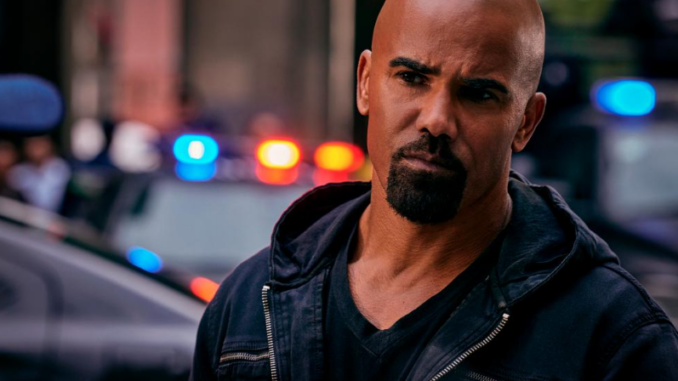
Introduction: A Window Into Social Issues
If you’ve ever tuned into the SWAT series, you know it’s not just about heart-pounding action and daring rescues. It dives deep into pressing social issues like police reform, community relations, and crime rates, making us question how we perceive law enforcement in today’s society. In this article, we’ll unpack the layers of social commentary embedded in the series, exploring its relevance in the current political climate.
Understanding the SWAT Series
What Makes SWAT Stand Out?
The SWAT series combines thrilling narratives with real-world dilemmas. Unlike many cop shows that focus solely on the action, SWAT thoughtfully intertwines social commentary, making it a conversation starter among viewers.
The Concept of Community Policing
At its core, the series emphasizes the importance of community policing—a philosophy that seeks to build relationships between law enforcement and the communities they serve. This theme resonates strongly, especially in today’s climate of heightened scrutiny on police practices.
Social Issues Addressed in the SWAT Series
Police Reform: A Call for Change
The SWAT series doesn’t shy away from addressing police reform. It highlights the need for changes in policing practices, showing the struggles of officers trying to do their jobs while navigating public perception and systemic issues.
The Impact of Public Perception
As viewers, we see how the characters deal with the fallout from public perception of police work. The show invites us to consider: How does media portrayal influence community trust in law enforcement?
Community Relations: Bridging the Gap
The series showcases various scenarios where community relations are tested. Through character interactions, we witness how understanding and empathy can bridge gaps between officers and citizens.
Examples of Positive Engagement
In several episodes, we see characters participating in community events, working to build rapport with residents. These moments reflect the real-life importance of engaging with the community beyond just law enforcement.
Crime Rates and Their Implications
Realities of Crime in Urban Areas
The SWAT series often depicts the harsh realities of crime in urban settings. By addressing high crime rates, it prompts discussions about the underlying factors contributing to these issues—such as poverty, lack of education, and systemic inequality.
A Call for Prevention over Punishment
Instead of glorifying police raids and arrests, the series often emphasizes prevention and intervention strategies. This approach aligns with contemporary discussions on how to effectively reduce crime rates through community involvement and support services.
The Politics of Policing
Political Commentary on Law Enforcement
The SWAT series subtly weaves political commentary into its narratives. It doesn’t just portray law enforcement; it questions the systems that govern them.
The Role of Leadership
Characters often grapple with decisions made by higher-ups, reflecting the reality that police departments are influenced by political agendas. This commentary invites viewers to consider how political decisions impact policing strategies.
Impact of Social Movements
With rising social movements advocating for police accountability, the SWAT series incorporates these themes into its storyline, creating a mirror for society’s ongoing struggles for justice and equity.
The Representation of Diverse Communities
Highlighting Diversity Within Law Enforcement
The SWAT series features a diverse cast of characters, showcasing how representation matters in law enforcement. This diversity helps challenge stereotypes and fosters understanding among different community groups.
Community Voices: A Necessary Inclusion
The show often includes characters from various backgrounds, allowing for a richer narrative that reflects the complexities of community dynamics. These representations encourage viewers to consider the multifaceted nature of societal issues.
Consequences of Crime and Its Representation
The Human Cost of Crime
Through compelling storytelling, the SWAT series illustrates the human cost of crime, not just for victims but for the officers involved. This focus encourages empathy and understanding for all parties affected by crime.
Encouraging Conversations About Solutions
By depicting the challenges faced by both law enforcement and community members, the series sparks vital conversations about potential solutions to reduce crime and improve community relations.
Balancing Action with Serious Issues
The Need for Entertainment vs. Education
While action is a significant draw for viewers, the SWAT series masterfully balances entertainment with serious social commentary. This combination keeps viewers engaged while also provoking thoughtful discussions about important issues.
Why This Matters
Shows like SWAT remind us that entertainment can be a powerful tool for raising awareness and fostering dialogue about pressing societal challenges. They encourage us to think critically about the world around us.
Conclusion: The Power of Storytelling in Addressing Social Issues
The SWAT series goes beyond typical cop drama by tackling complex social and political issues. Through its exploration of police reform, community relations, and crime rates, it challenges us to confront our perceptions of law enforcement and engage in meaningful conversations about change. As viewers, we are invited to reflect on the broader implications of these stories and consider our roles in shaping a more just society.
FAQs
1. What social issues does the SWAT series address?
The SWAT series addresses various social issues, including police reform, community relations, and the implications of crime in urban areas.
2. How does the series portray police reform?
The series highlights the struggles of officers to adapt to changing public perceptions and emphasizes the need for systemic changes in policing practices.
3. Why is community policing important in the show?
Community policing is portrayed as vital for building trust between law enforcement and the communities they serve, promoting positive engagement and understanding.
4. How does the series reflect real-life crime rates?
The show portrays the realities of crime in urban settings and emphasizes prevention strategies, encouraging discussions on the root causes of crime.
5. What impact does the SWAT series have on public perception of law enforcement?
By depicting diverse perspectives and emphasizing empathy, the series influences public perception of law enforcement and encourages viewers to engage in meaningful discussions about policing.
